‘She Rug’ Exhibition Celebrates Centuries of Kazakh Carpet Weaving
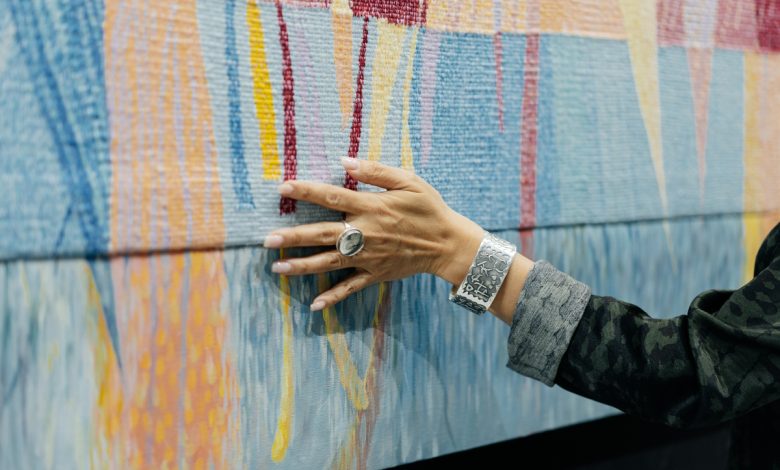
ASTANA—Heritage from a long line of carpet weavers in Kazakhstan is presented at the “She Rug” exhibition, which opened in Astana on Oct. 17 and will run through Nov. 9. Forte Kulanshi art space temporarily became home to a remarkable collection of traditional Kazakh carpets spanning ancient times to the 20th century and modern times.
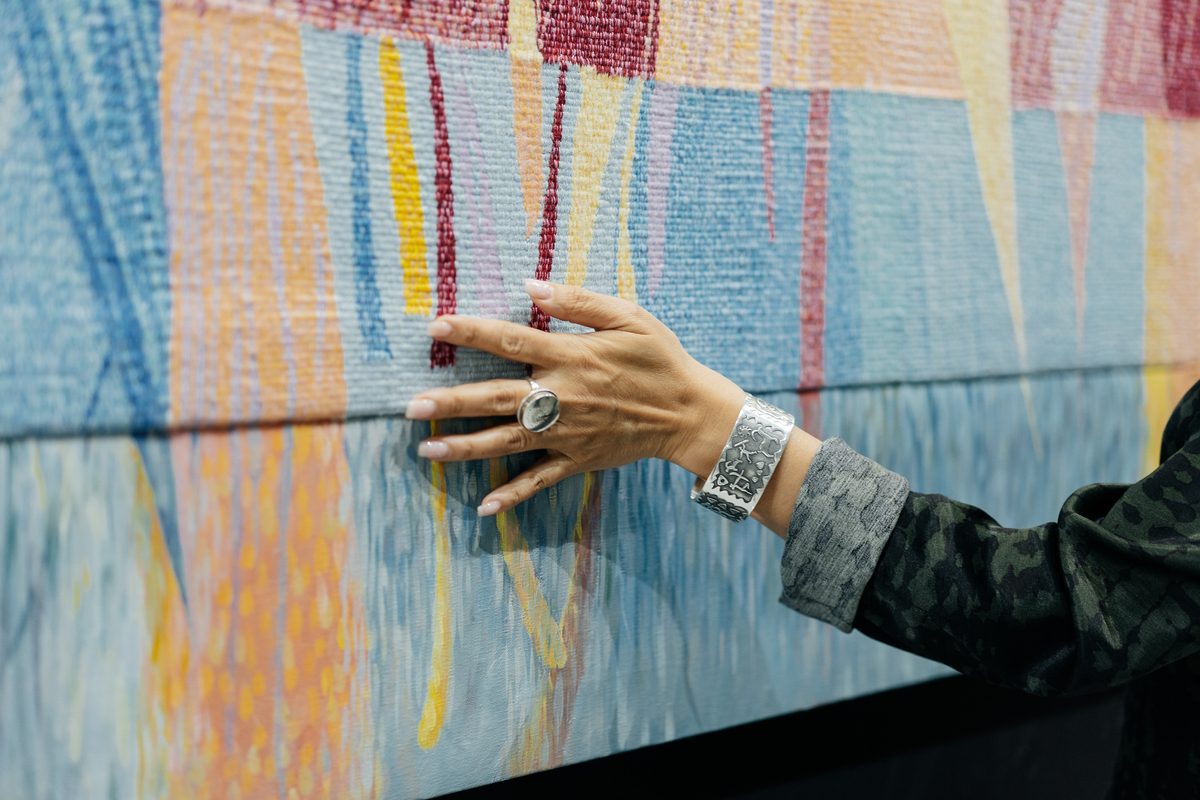
“She Rug” exhibition will run through Nov. 9 at Forte Kulanshi art space. Photo credit: Aigerim Kagarmanova.

The exhibition curator Sandugash Beisenbekova. Photo credit: Aibarshyn Akhmetkali/The Astana Times
The exhibition features over 50 works by eight tapestry masters and a collection of carpets from prominent collectors. Among the showcased artists are renowned figures such as Alibay Bapanov, Serzhan Bashirov, Malik Mukanov, Botagoz Tolesh, Natalia Bazhenova, among others.
The exhibition features three types of carpets: lint, lint-free, and bizkeste (filigree crochet).
The exhibition curator, founder and creative director of ShyraQ studio, Sandugash Beisenbekova, told The Astana Times that the word Shyraq, also a wordplay with She Rug, meaning “light in the darkness,” encapsulates the essence of this exhibition. It seeks to illuminate the untold stories of the Kazakh steppes through carpets and contemporary tapestries.
“These woven masterpieces serve more than mere artifacts. They are a living narrative that sheds light on the rich cultural heritage of a people who, although they left behind no grand cathedrals or fortresses, endowed their carpets with symbols and messages of resilience and courage, freedom and enlightenment. In the intricate patterns of each rug, one can trace the origin of the nomadic spirit – a spirit that valued mobility and intangible but profound markers of identity above monumental architecture,” said Beisenbekova.
“This exhibition is a tribute to all masters of carpet weaving, who lived, worked and created on the Kazakh land,” she added.
Kazakh tradition of carpentry
Carpet weaving is an ancient Kazakh tradition, although not very well-known worldwide.
“Everyone knows about Turkmen carpets, about Azerbaijani or Afghan carpets, but no one really knows about Kazakh carpets, although the origins of carpet weaving date back to the Saka period,” said Beisenbekova.
The exhibition features a recreation of one of the oldest Saka carpets found on the territory of the Pazyryk burial, which is located in the Altai mountains between Mongolia, Russia and Kazakhstan. The original carpet of the Pazyryk burial hangs in the Hermitage in Saint Petersburg, Russia.
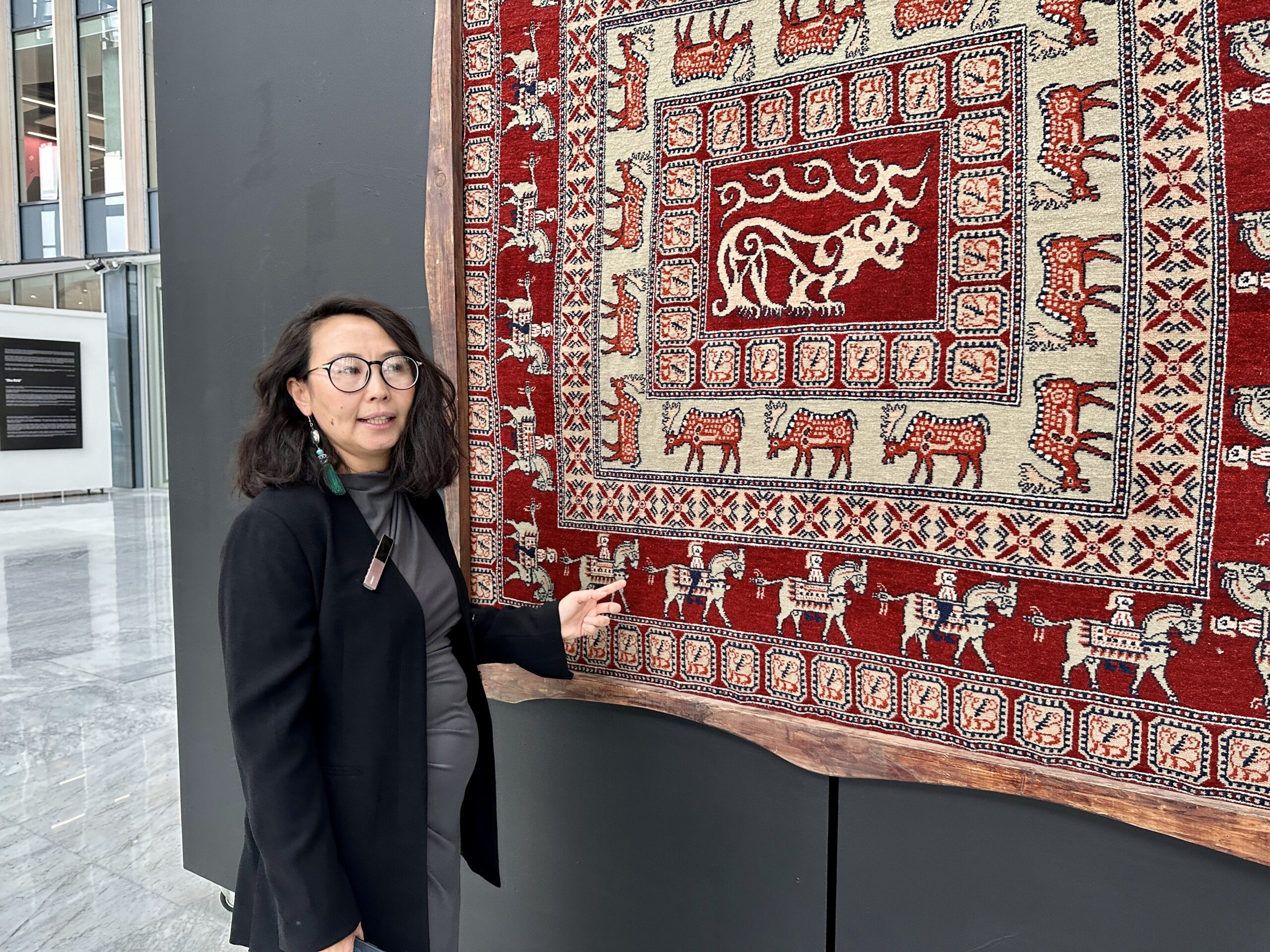
Recreation of one of the oldest Saka carpets found on the territory of the Pazyryk burial. Photo credit: Aibarshyn Akhmetkali/The Astana Times
“This is the work of Mereke Aidarsha; she wove it based on motives of that [Saka] rug. By hanging this rug, we want to say that our carpet weaving does not start from the 20th century, but our origins of carpet weaving come from the Saka civilization,” said Beisenbekova, referring to the civilization that dates back to the eighth century B.C.E. and the first centuries of C.E.
Nomadic tribes in Kazakhstan have woven carpets by hand, using patterns that have been passed down from mother to daughter for thousands of years. The painstaking process of shearing the sheep, weaving, and coloring the carpets took months.
“Nomadic civilization has other cultural code. These are not material values; they are spiritual values, and all our information, all our art, and the apogee of our heritage are textile objects. Unfortunately, we have very few art specialists and anthropologists who study this. All the research work was done in the 1940s and up to the 70s by Soviet researchers,” said Beisenbekova.
“In general, most Kazakhs are more familiar with kiiz [felt carpet] because they are much simpler to make than carpet weaving in terms of the production cycle. Carpet weaving requires some time. For example, when I was growing up with my grandmother, we could make eight kiizs in a single summer. However, creating just one woven carpet would take an entire year,” added Beisenbekova.
Carpet weaving required a more settled lifestyle, which was not feasible in all parts of Kazakhstan. As a result, this craft was better developed in the northern and western regions of the country.
Carpet as part of identity
The rugs woven by nomads were placed on the floors and the walls of their yurts not only for warmth and decoration but also as symbols that carried information about the family’s wealth and heritage. Some were specially made as wedding gifts for a bride’s dowry.
“A carpet conveys fundamental information about the family it belongs to—who they are and what their values are. For instance, if their ancestors were rulers, religious followers, or healers, those identities were symbolically encoded in the carpet’s intricate ornaments,” said Beisenbekova.
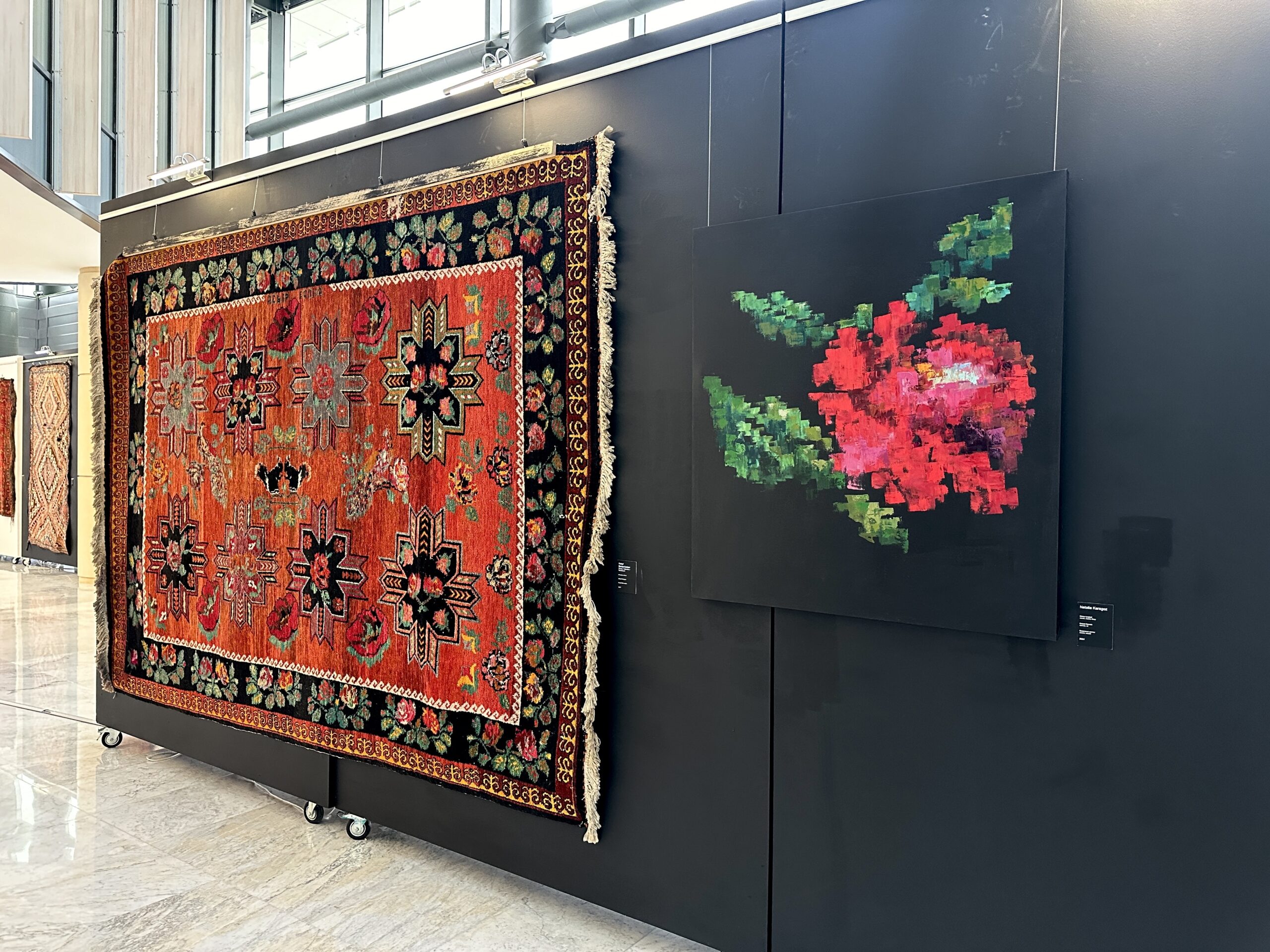
The Soviet era carpet with fading national identity symbols placed along Natalia Karagoz’s “Carpet Flowers” painting, representing Gagauz people’s traditional carpet ornament. Photo credit: The Astana Times
Natalia Karagoz, a contemporary realist artist from Gagauziya, Moldova, is the only artist in the gallery whose work might initially seem unrelated to rugs but is deeply connected to them. Gagauz people are a Turkic ethnic group who converted to Orthodox Christianity. Her “Carpet Flowers” painting is part of her rug flower series. She discussed with The Astana Times the importance of expressing one’s identity through art.
“For an artist, or, in fact, for any person, it is important to carry your culture, your identity, your DNA, especially when you live somewhere abroad. I was born in Moldova and lived for a long time in Romania,” said Karagoz, who now lives in Kazakhstan.
“I created a series of carpet flowers. Basically, our kilims [carpets], as we call them, are made on a black background. Why did they do that? Because our Gagauz people went through a very difficult stage in history. The Balkans, for a long time, have experienced wars, and some kind of squabbles. The Gagauz people were even forced to change their religion. When my people endured that difficult chapter in history and eventually reached places like Bulgaria, Serbia, or farther away to Moldova, it seems to me that they sought to bring some light into their lives and decorate their carpets with red flowers. It wasn’t just about functionality—it was also about beauty, an attempt to brighten up the space where they lived,” Karagoz explained.
As visitors move through the exhibition, from ancient carpets to those crafted during the Soviet era, national identity fades, giving way to more universal symbols such as birds and flowers.
Weaving as a means of women’s economic empowerment
In her ShyraQ studio, Beisenbekova helps to revive Kazakhstan’s rich carpet-weaving heritage by empowering the women who make them.
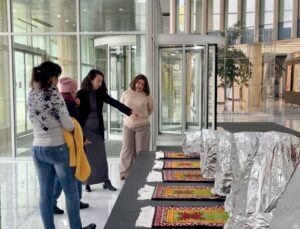
Photo credit: Aibarshyn Akhmetkali/The Astana Times
“Our goal is to preserve the original traditional art, namely the method of horizontal carpet weaving. Until the 90s, this art was kept alive in the villages, but with the influx of Turkish and Chinese, no one did it anymore. Today, most carpets found in the market are vintage pieces from that era. Our first mission is to preserve heritage because those women who weaved back then were in their 40s. Now they are 60-70 years old, and if they pass on without sharing their knowledge, this art form could disappear with them,” said Beisenbekova.
She said she believes it is also an opportunity for Kazakh rural women to weave their way out of financial dependence. For many women in isolated villages, weaving could be a way to make a living, and ShyraQ helps women in the Turkistan Region do business.
“The second goal is that coming from the auyl [village in Kazakh], I know firsthand the challenges of employment in rural areas. In fact, when we talk about the issue of domestic violence, its roots often trace back to women’s lack of financial independence. That is why we currently employ around 15 women; some of them are mothers with many children. We provide them with small weaving machines, they weave at home, and then we take care of bringing the products to market,” said Beisenbekova.

